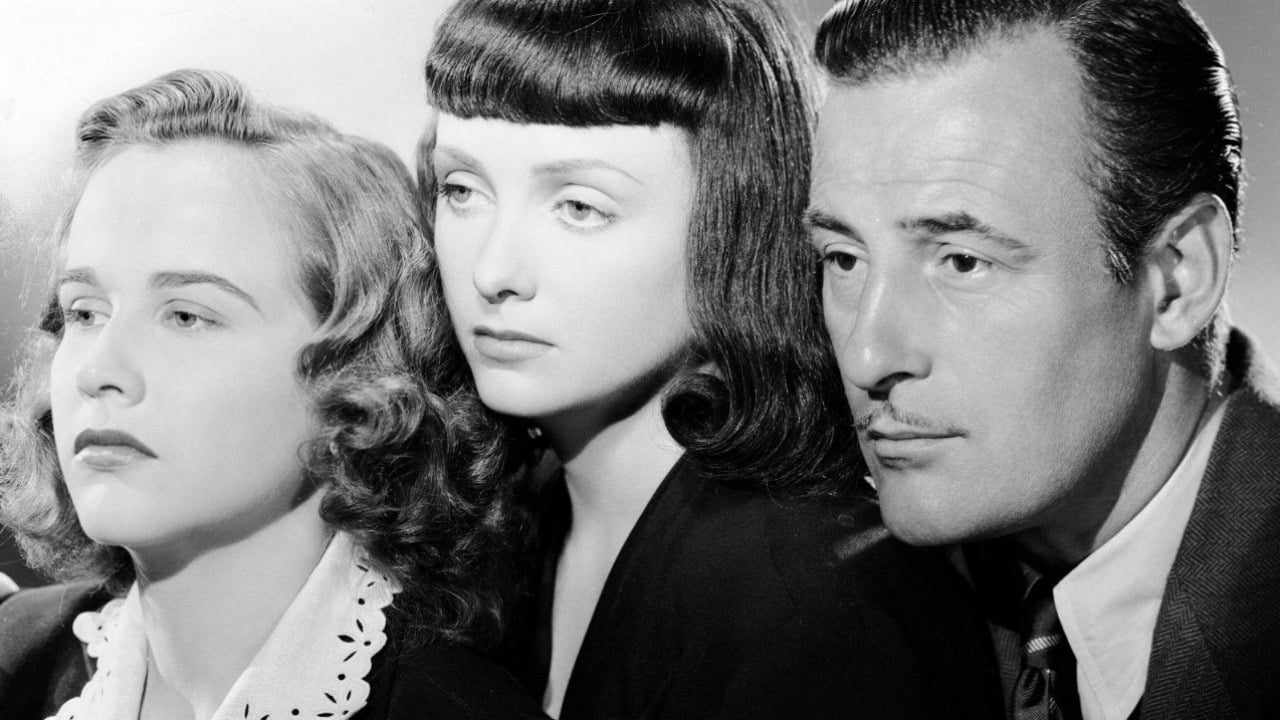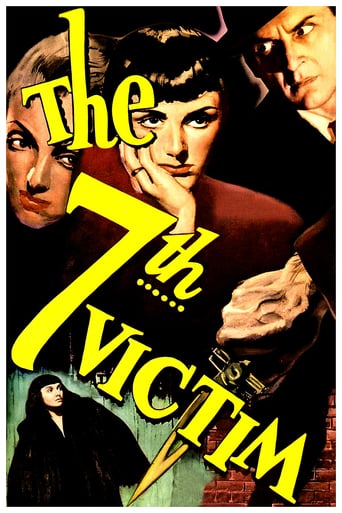

It is the worst film produced by Val Lewton (the best is 'The Leopard Man', same year, 1943). Nothing in this movie makes sense, nothing is deeply explained, the script seems to have been written by a (retarded) child of 5 years, and all the actors have a terrible performance and without expression. They are like refrigerators trying a dialogue among themselves.The story: a young woman, Kim Hunter, has her missing sister, and a bunch of idiots who come out of nowhere, try to help her. One of them is the missing sister's husband, and suddenly, in the middle of the movie, he falls in love with Hunter (apparently, and for no reason, he loses interest in the missing wife)! The movie has no style, no genre: is not a mystery, it is not terror, it is not noir, it is not drama, in fact, it is difficult to determine the style, perhaps it would be a new definition for 'pure garbage'. The most we can say is that is ridiculous and comical in some scenes: Hunter's missing sister, wears a Cleopatra-style wig, and is part of a group of Satanists (as emotional as a bunch of gathered trees). Inexplicably the 'sister Cleopatra' is a potential suicide (do not ask the reason, the movie does not explain anything; the goal of the director, producer and screenwriter is to make you sleep ).The highlight scene: the group of Satanists gets highly impressed when some characters recite The Lord's Prayer for them!Anyway, you can risk and lose 70 minutes of your life seeing this pigsty, however, remember you will notice that never in your life 70 minutes took so long to pass!
... View MoreBelieve me, I really did try to cut this 1943 Mystery/Thriller (about modern-day devil worshippers operating in NYC) some serious slack. I really did.But, when it finally came around to meeting these "Palladists" (aka. Satan's ass-kissers) - They, unfortunately, came across (to me) as being even more dreary and joyless than a bunch of snivelling bible-thumpers - And, because of that - I had no choice but to rate this moronic picture with just a 3-star rating.Yes. I do realize that the Hays Code was in full effect at the time that "The 7th Victim" was released - But, all the same - This picture certainly could have delivered a more substantially worthwhile wallop (considering its subject matter) than it inevitably did.Anyway - In my opinion - This was one of those vintage pictures that was so bad that it was downright laughable. Thank goodness that all of this devil-worship nonsense only had a 70-minute running time.
... View MoreYou're in store for satanic misery when you see this awful 1943 film.Kim Hunter spends the entire film looking for her missing sister. The latter is often seen with a Cleopatra like-hair-do and is constantly seeking out death.While searching, Kim meets up with the people around the sister's orbit. Seems as though she has joined a Satanic cult and as they claim she has betrayed them, she must die!Only Isabell Jewell has her moments as one of the members of this sick group. Jewell can burst forth crying, but this is not like her condemned seamstress 8 years earlier in the magnificent "Tale of Two Cities."Along the way, Hunter finds love with a guy she later discovers is married to the cookie sister. How convenient the sister makes it for them at film's end. Let us say a merciful end.
... View MoreFor a few years in the early 1940s a small, B-feature producer achieved something very unusual within the Hollywood industrial system: a series of personalised films featuring a repertory company of performers, directors, writers and technicians. The producer, a Russian émigré who anglicised his name to Val Lewton, had been kicking around Hollywood for years, initially as a writer and then as a gofer for David Selznick, before RKO gave him an opportunity to produce B movies. These had to be completed in six weeks, produced in the studio lot using existing sets and on a shoestring budget. The first, Cat People, was an enormous success. Thereafter, he was saddled with increasingly crass titles (I Walked with a Zombie, The Leopard Man, Curse of the Cat People) which belied the haunting and melancholic quality of the films themselves. Despite the restrictions, Lewton proved a shrewd operator. Using inexperienced directors with ambition (Mark Robson directed The Seventh Victim and others who owed long future careers to Lewton included Robert Wise and Jacques Tourneur), Lewton was able to create an ensemble of considerable talent, over which he presided with a unifying sensibility unlike that of any other producer, with the possible exception of his former boss, David Selznick. The Seventh Victim was the first of the series not to attract a lurid title and, possibly in consequence, did less well than others. The film defies genre: neither thriller nor horror film but with elements of both, the plot is a quest. Mary Gibson (Kim Hunter) is told by the head teacher of her boarding school that she will have to leave because her sister Jacqueline (Jean Brooks) has stopped paying the fees and disappeared. Mary travels to New York where she makes chilling discoveries about her sister's life. Along the way, Lewton's script provides his trademark moments of shock and black humour (an elegant one-armed woman is asked to play the piano and deal cards) and provides ample evidence of the influence Lewton's work had on his friend, Alfred Hitchcock, and Roman Polanski. At 78 minutes the film is a model of spare story-telling though, inevitably, the strictures of budget, time (filming took only 24 days) and studio control had some impact on performances. These are mitigated by the availability of RKO's house team of designers, director of photography, Nicholas Musuraca and composer, Roy Webb, which lends it a visual and aural richness well beyond its means. The Seventh Victim's uniqueness, however, is that, like the John Donne sonnet with which it opens and closes, it is a meditation on death, quite unlike anything else of its time and place, personified by the beautiful and haunted face of Jean Brooks as she walks the rainy streets of a studio-bound Manhattan. Lewton went on to produce seven more films at RKO in the next three years before a making a series of disastrous career choices that limited his output to only two further films before his death of a heart attack at the age of 46 in 1951. Footnote: Intrigued by his lack of further credits, I recently looked up the career details of one of the actors in The Seventh Victim, Erford Gage, only to discover that he was killed in action on Iwo Jima in 1945, some 18 months after The Seventh Victim was released.
... View More